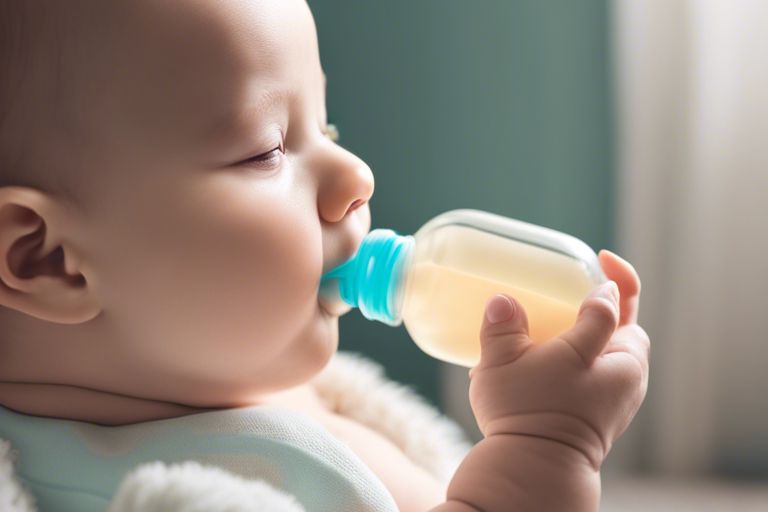tips, tricks and guides for parenthood
There's no denying that the topic of using pacifiers during feeds can be a contentious one among parents. On one hand, pacifiers can provide comfort and soothing to a baby, helping them to calm down and relax during feeding times. However, there is concern that pacifier use may interfere with a baby's ability to latch properly and breastfeed effectively. As a parent, it's important to navigate this decision carefully, weighing the benefits of pacifier use against the potential risks, and considering your own baby's unique needs and feeding habits. Ultimately, the choice to pacify or not during feeds is a personal one that should be made based on what works best for both you and your baby.

With a history dating back centuries, pacifiers have been used to soothe babies and provide comfort during feeding times. Initially made from materials like wood and leather, modern pacifiers are typically made from safe, BPA-free materials. The primary purpose of a pacifier is to satisfy a baby's instinct to suck, offering them a sense of security and calmness.
| Pros | Cons |
| Helps soothe baby during feeds | May cause nipple confusion |
| Aids in helping baby fall asleep | Difficulty in breaking the habit |
| Can reduce the risk of SIDS | Potential dental issues |
Pacifiers can be a valuable tool during feeding times, offering comfort and soothing for your little one. However, it's crucial to weigh the pros and cons before introducing a pacifier to your baby.
It is important to consider whether to introduce a pacifier to your baby during feeds. Pacifiers can be a source of comfort for babies, but there are also considerations to take into account regarding their use. For more information on the topic, you can refer to Pacifiers: Are they good for your baby?
Deciding whether to use a pacifier should be based on assessing your baby's individual needs. Some babies may have a strong sucking reflex and find comfort in using a pacifier, while others may not take to it as easily. It is important to observe your baby's cues and behaviour to determine if a pacifier could be beneficial during feeds.
When considering the use of a pacifier, it is imperative to be aware of pediatric recommendations and stay informed about the latest research in this area. Paediatricians may provide guidance on when and how to introduce a pacifier, as well as any potential risks associated with its use. Keeping up to date with the latest findings can help you make an informed decision for your baby's well-being.
Despite varying opinions, introducing a pacifier during feeds can be a personal decision. Some parents find it beneficial to introduce a pacifier from birth to help soothe their baby during feeds, while others prefer to establish a solid breastfeeding routine first before introducing a pacifier. It's important to observe your baby's feeding cues and comfort levels to determine the right time to introduce a pacifier.
During the early stages of breastfeeding, it can be challenging to balance breastfeeding with pacifier use. To make the transition smoother, consider these tips:
This will help ensure that your baby gets the comfort and soothing benefits of a pacifier while still maintaining a strong breastfeeding bond.
All parents want their little ones to feel calm and comforted, especially during feeding times. Pacifiers are a popular choice, but there are other natural soothing techniques you can try to help your baby feel content. Gentle rocking, soft singing, or gentle massage can all provide a sense of security and warmth for your baby.
Comfort is crucial for babies, and non-nutritive sucking is a common way they seek it. This instinctual behaviour involves babies sucking on a pacifier, their thumb, or fingers to self-soothe and feel secure. It can be a natural and healthy way for babies to calm themselves.
Understanding Non-Nutritive Sucking is important for parents to recognise when their baby needs comfort. By allowing babies to engage in this behaviour, they can learn to self-regulate their emotions and find comfort independently.
Taking this into account, navigating pacifier use during feeds can be a personal decision that parents make based on individual circumstances and preferences. It's important to consider the benefits and potential drawbacks of using a pacifier during feeding times, keeping in mind the impact it may have on breastfeeding, oral development, and soothing techniques. Open communication with healthcare providers and being attuned to your baby's cues can help guide you in determining whether to introduce a pacifier during feeds or not. Ultimately, the most important aspect is to create a feeding environment that is safe, comfortable, and supportive for both you and your baby.
A: It is recommended to introduce a pacifier once breastfeeding is well established, usually around 3 to 4 weeks of age.
A: While some babies may have nipple confusion, many babies can successfully breastfeed and use a pacifier without any issues.
A: It is advised to use a pacifier sparingly during feeds, mainly for comfort or to help a baby relax while falling asleep.
A: Using a pacifier during feeds can help satisfy a baby's natural sucking reflex and provide comfort, potentially reducing the risk of sudden infant death syndrome (SIDS).
A: If a baby is having trouble breastfeeding or gaining weight, or if a pacifier is causing issues, it may be time to discontinue use during feeds and seek advice from a healthcare provider.